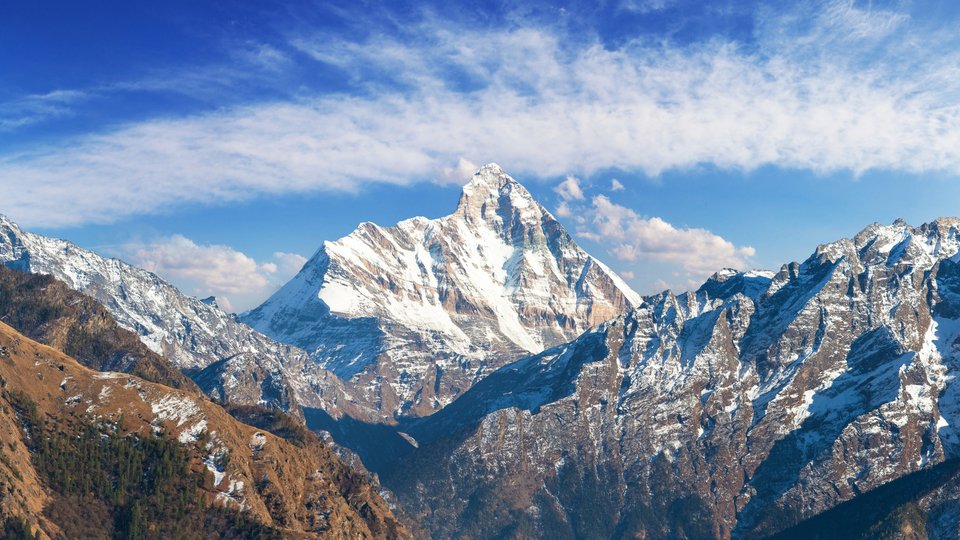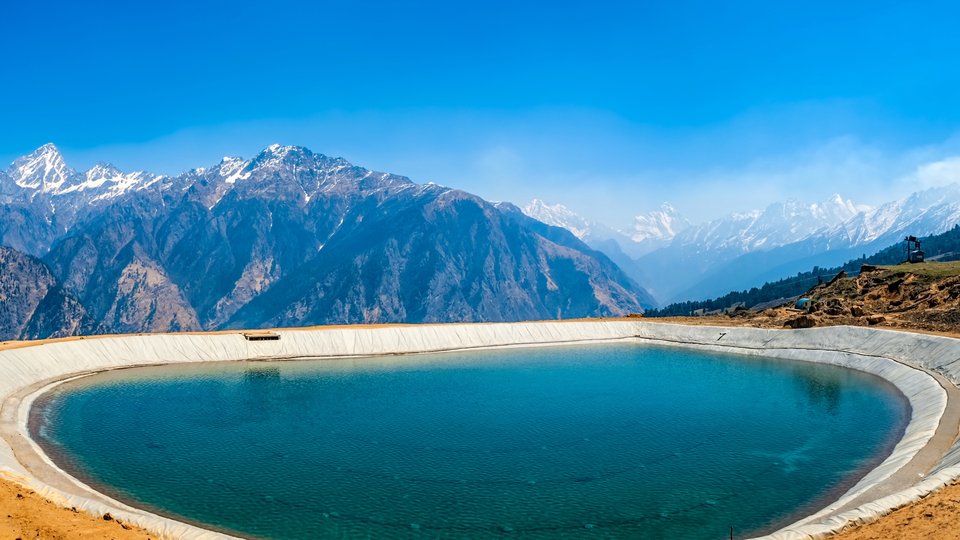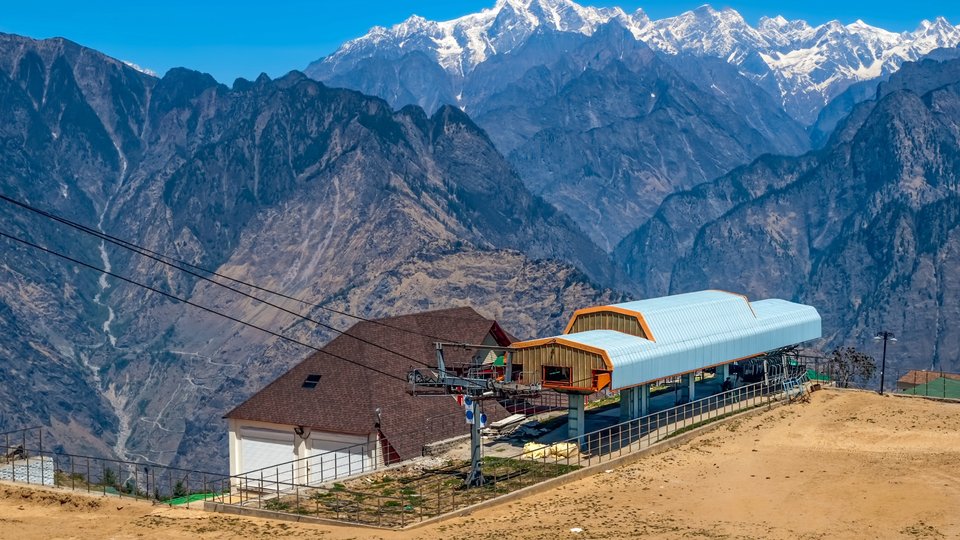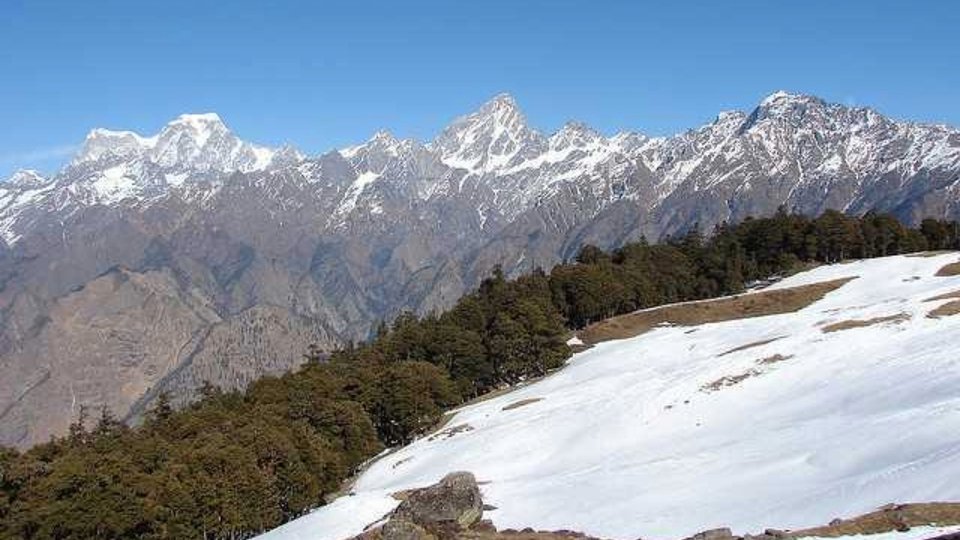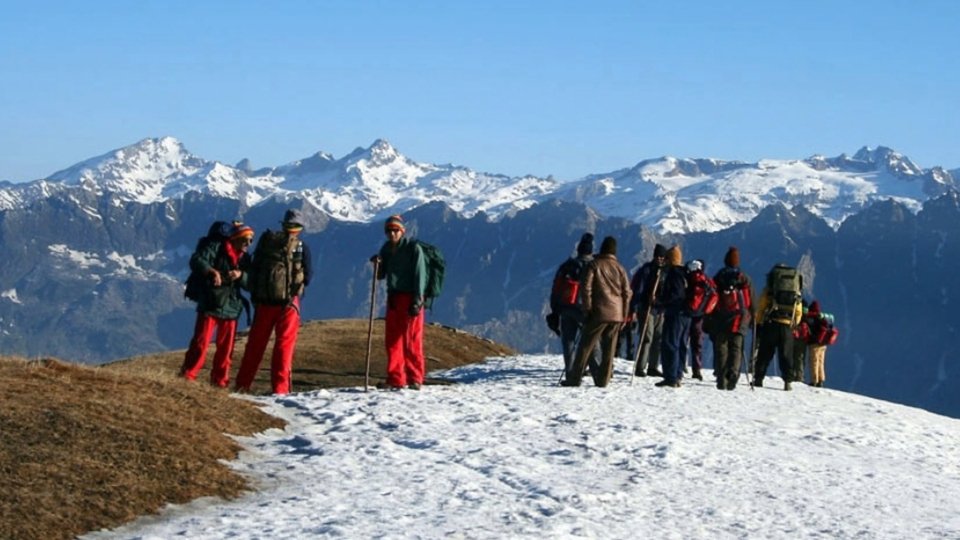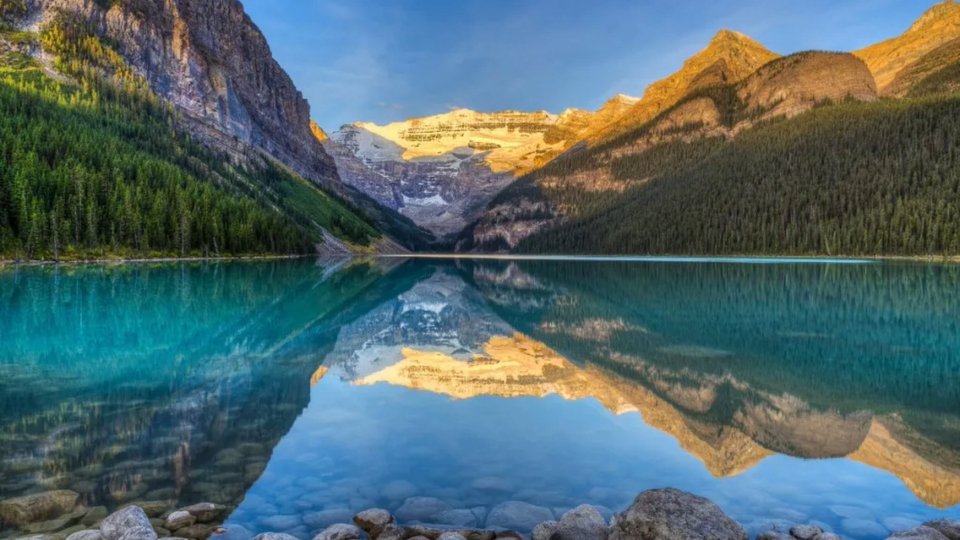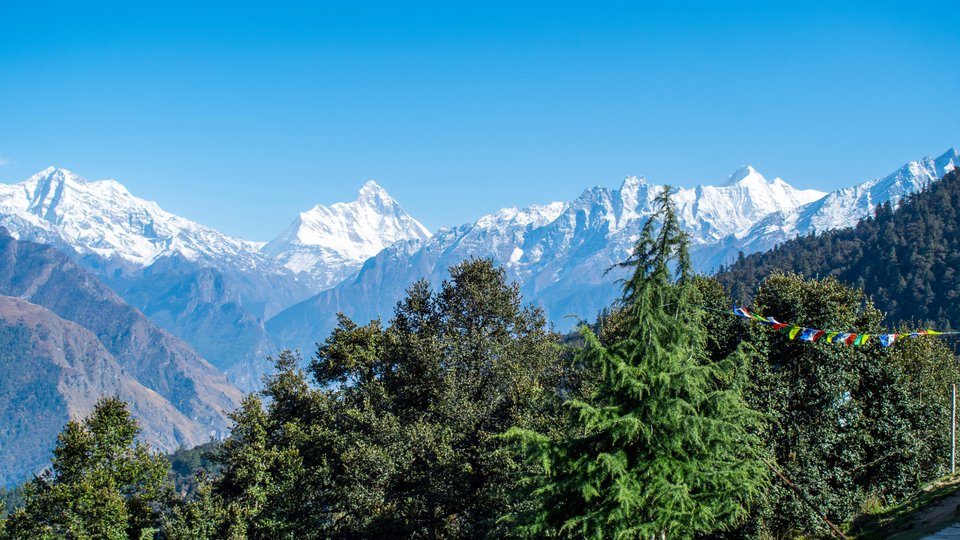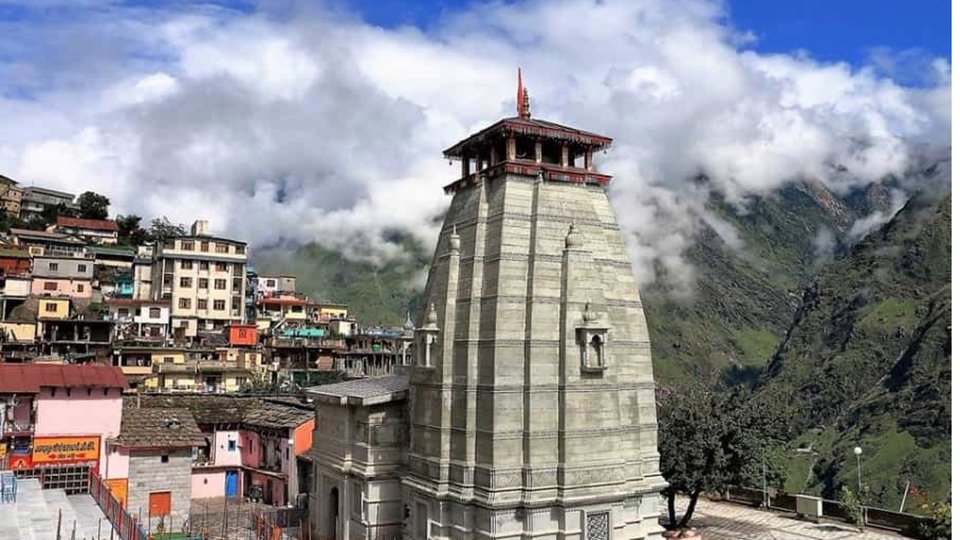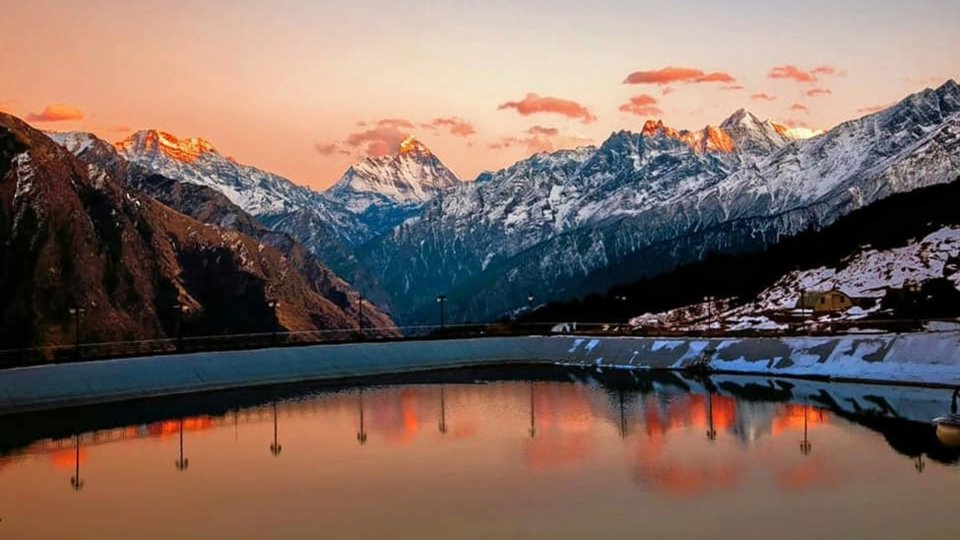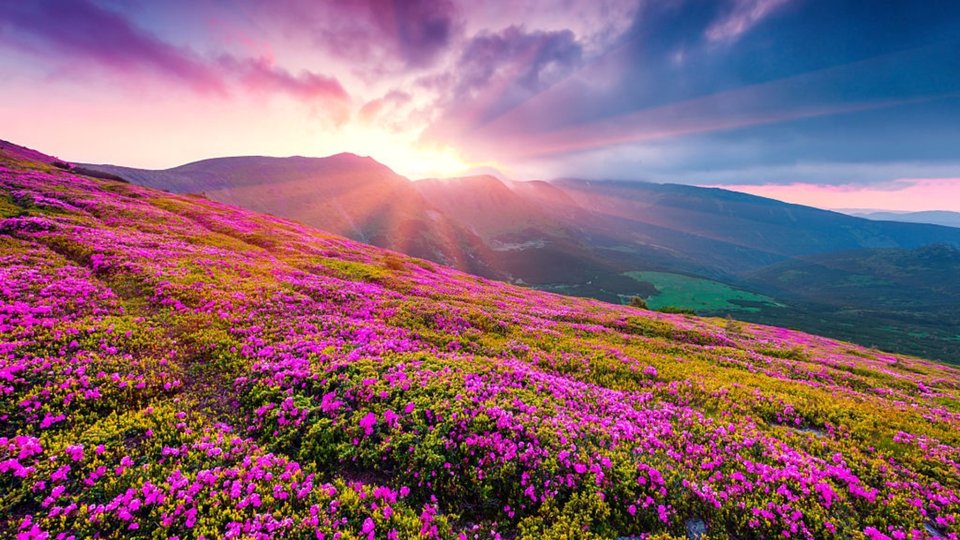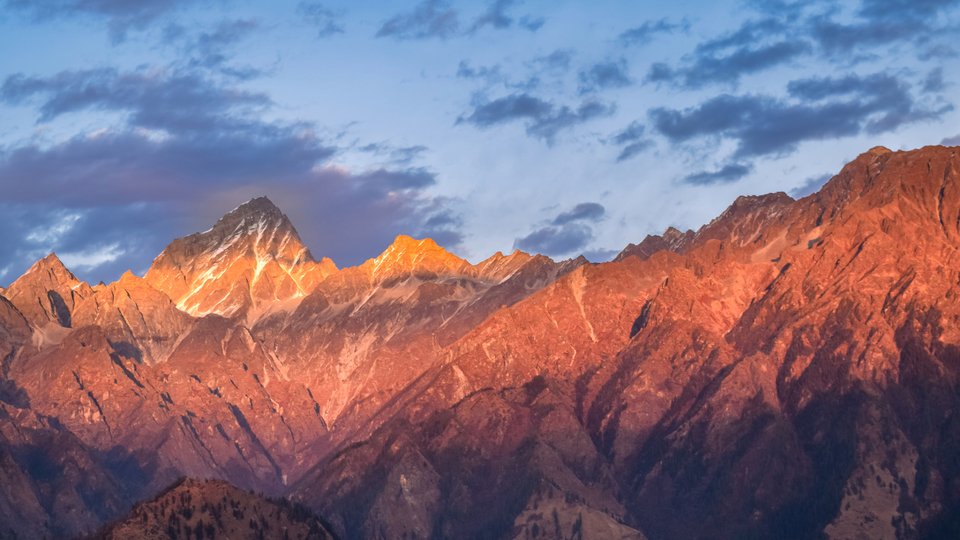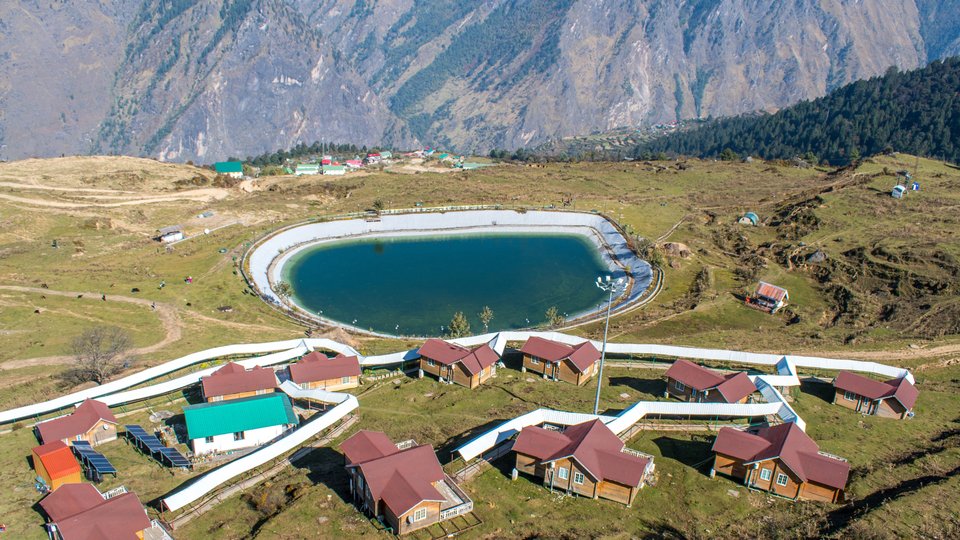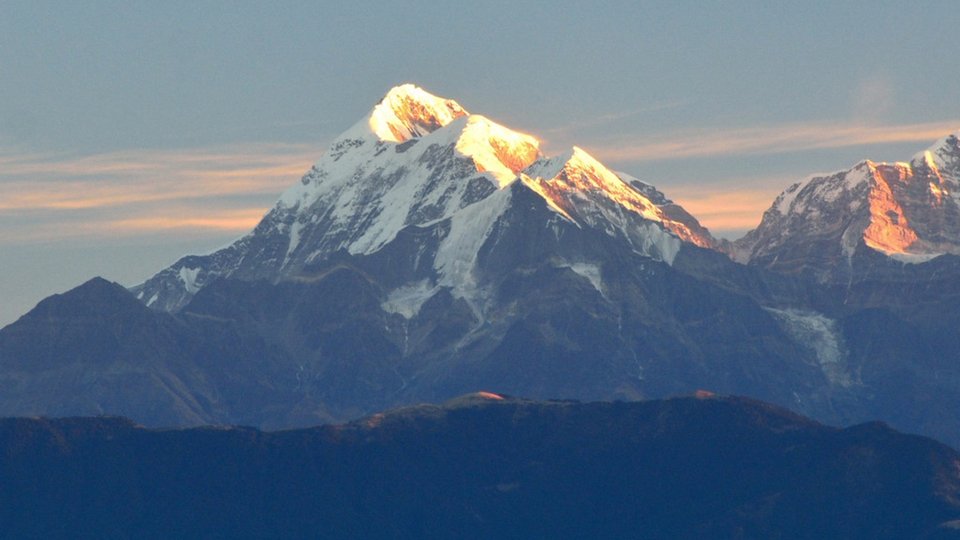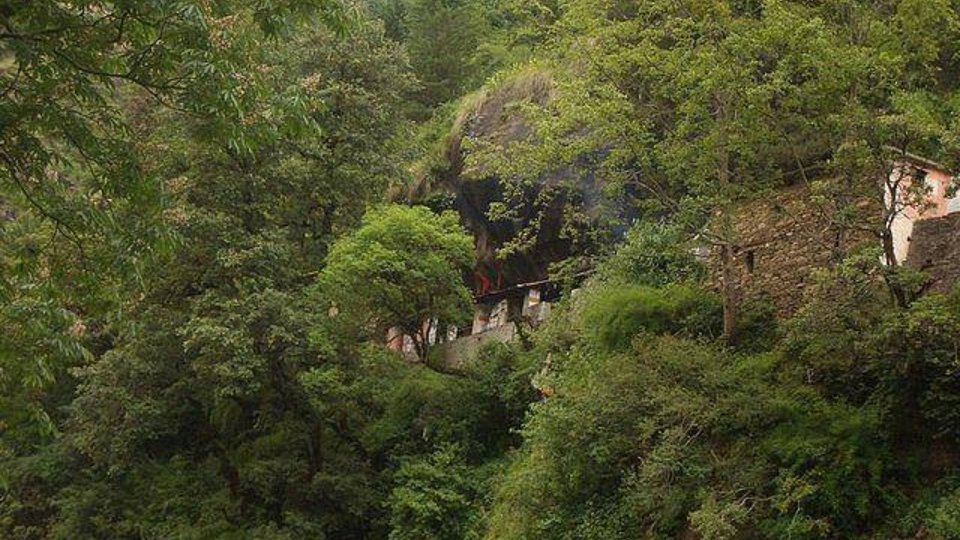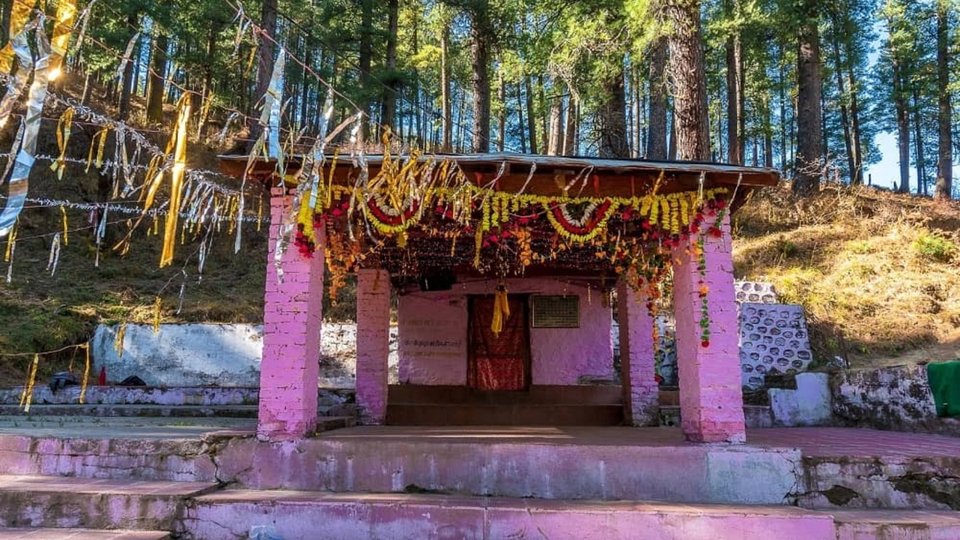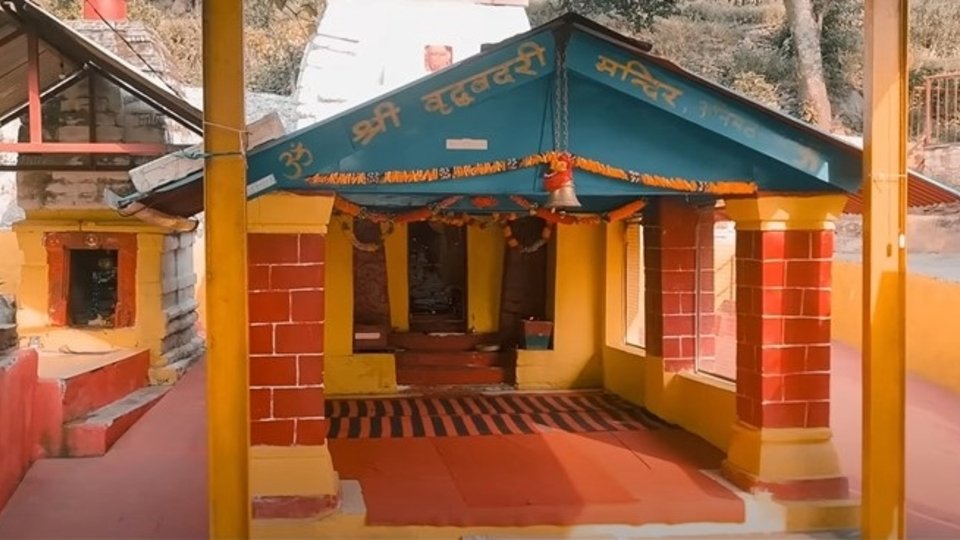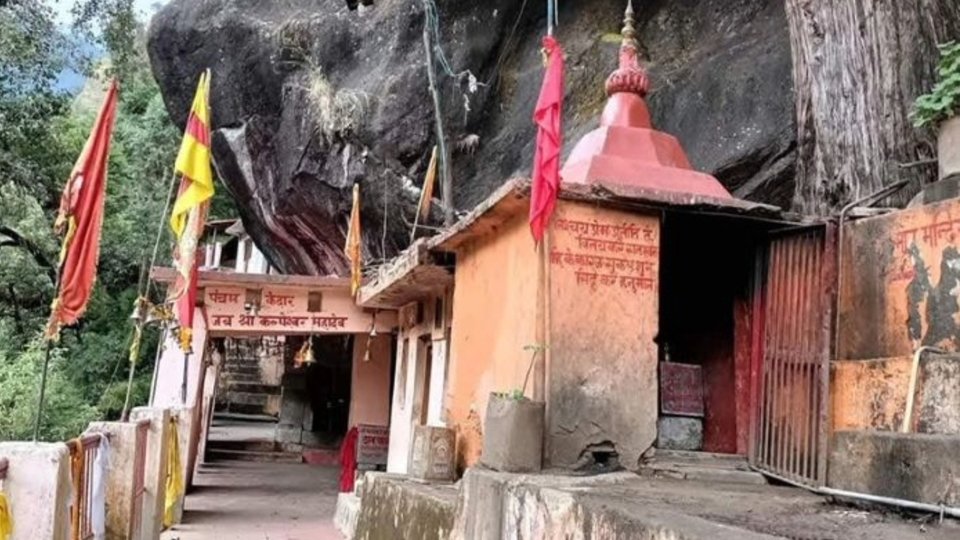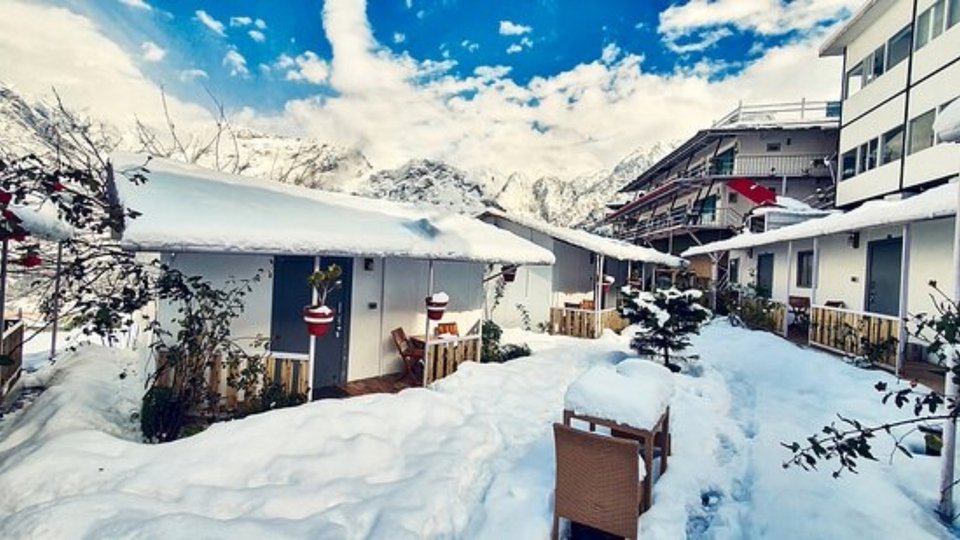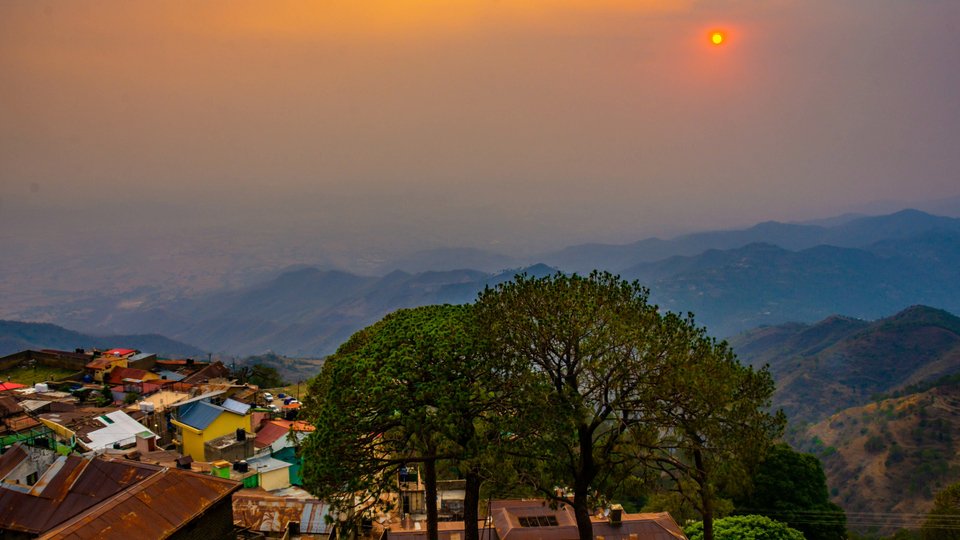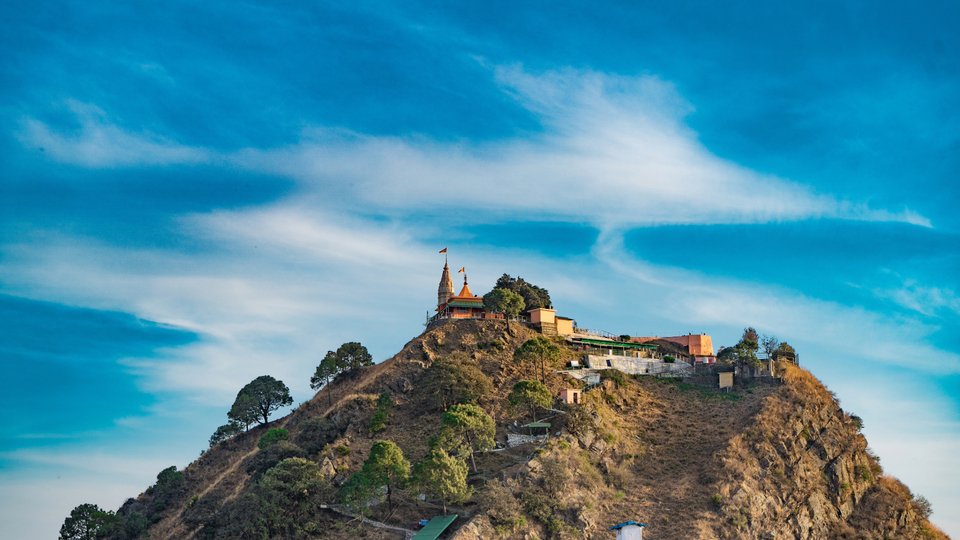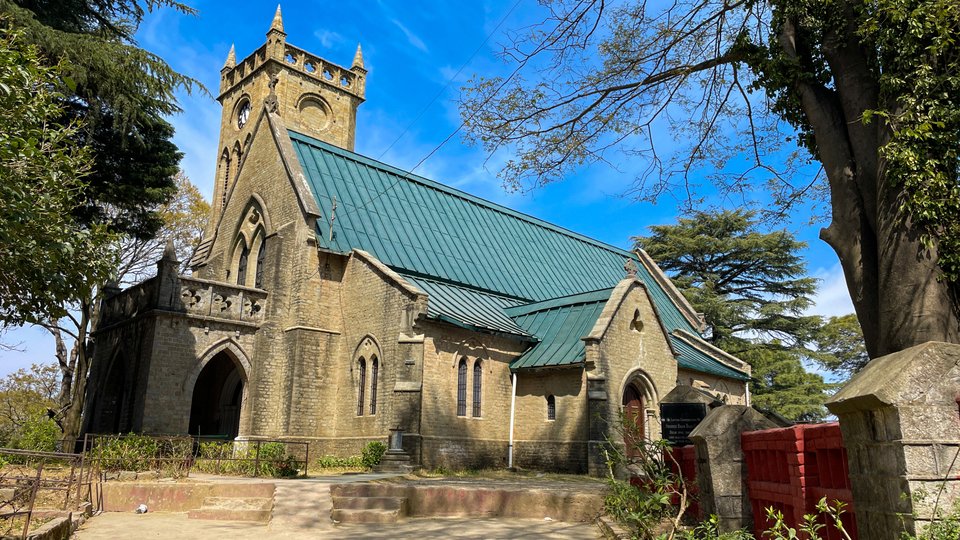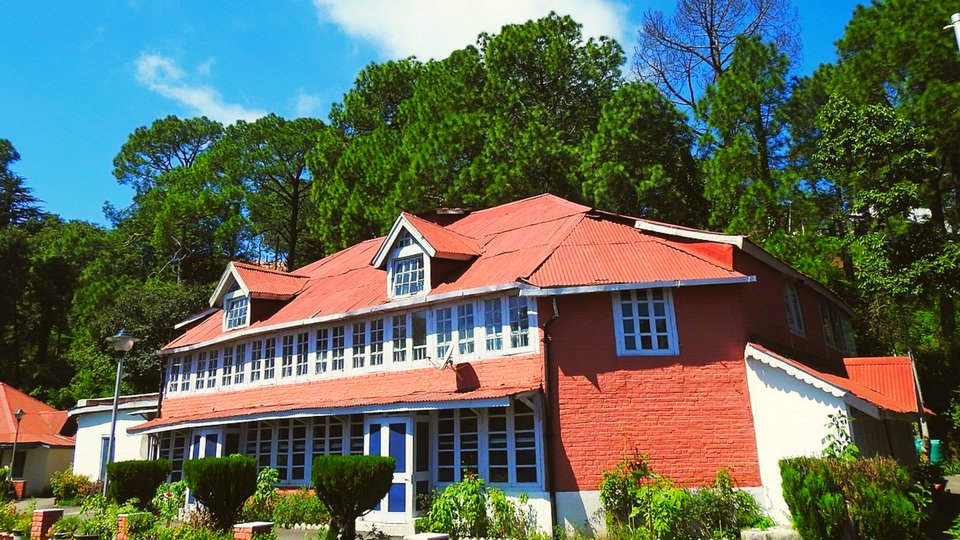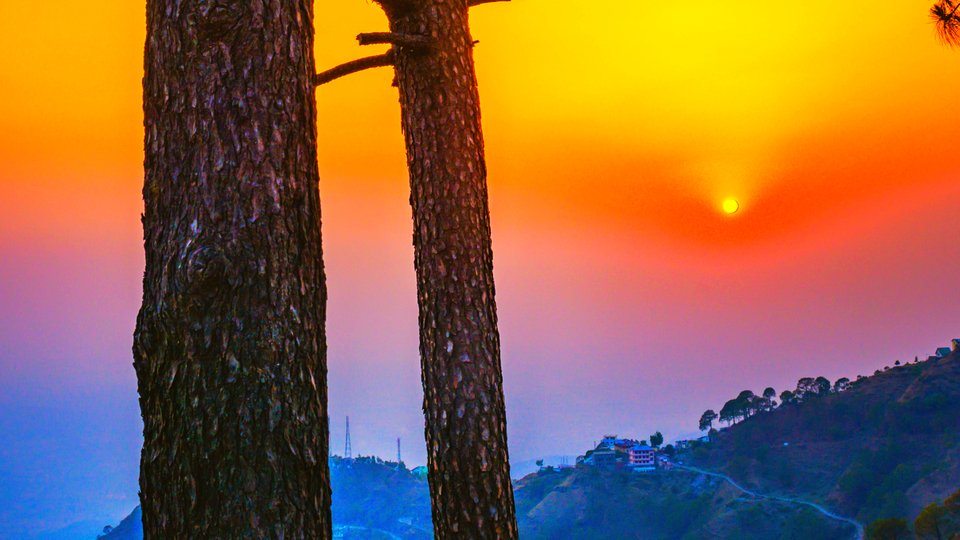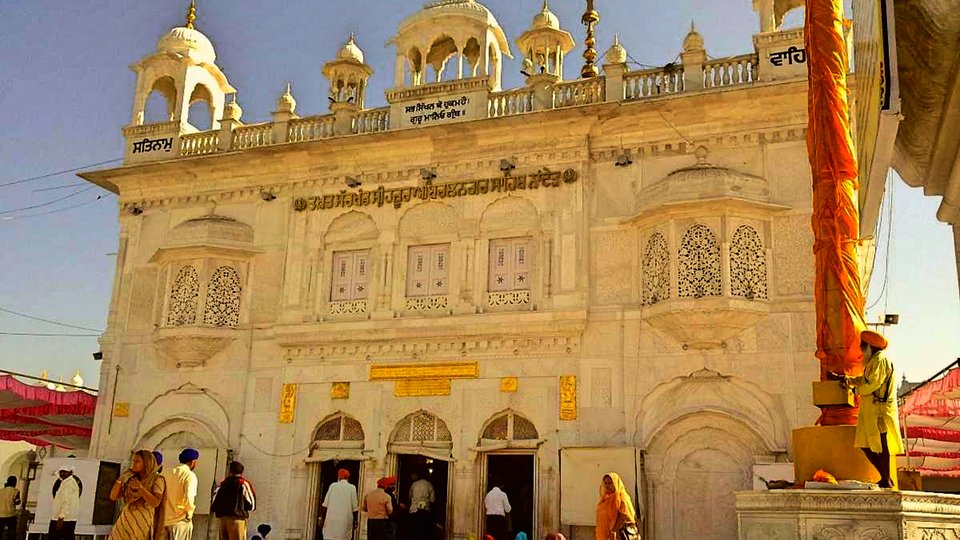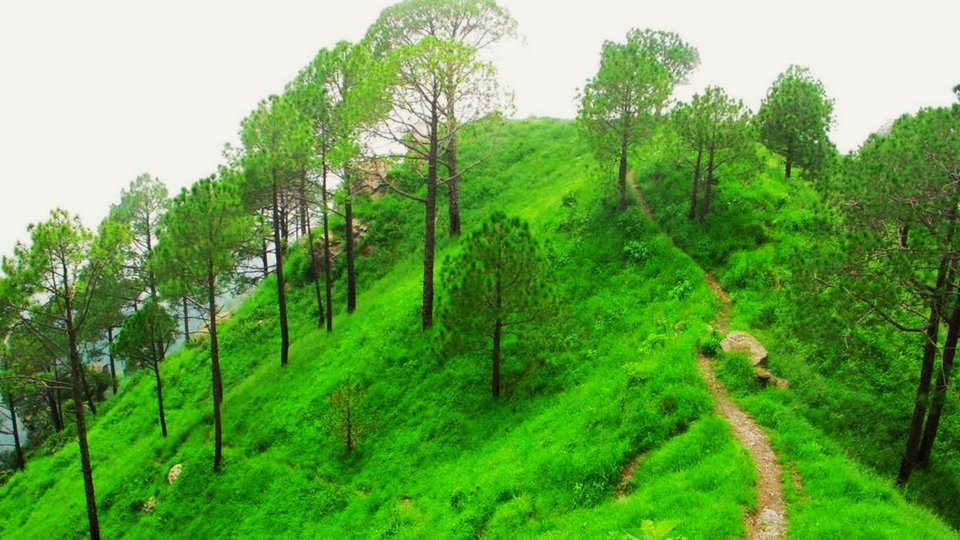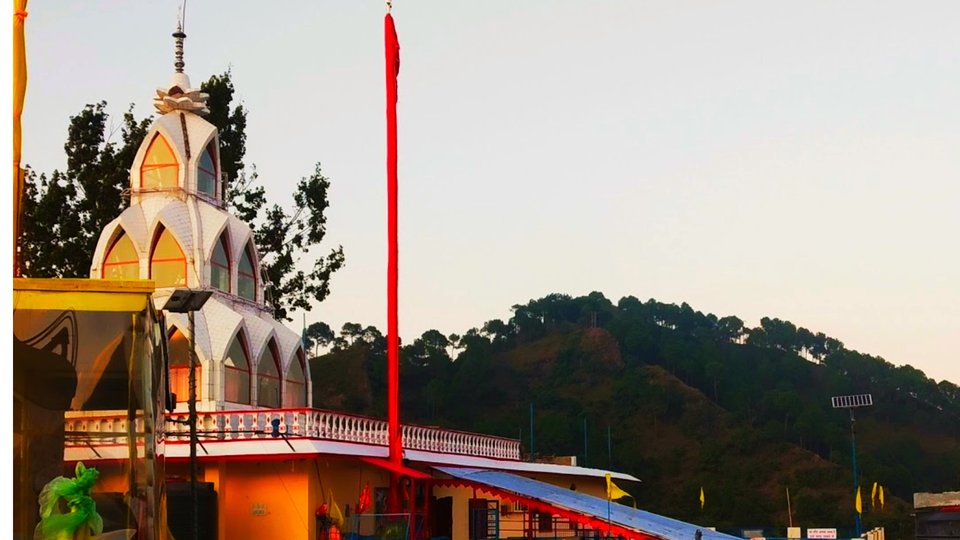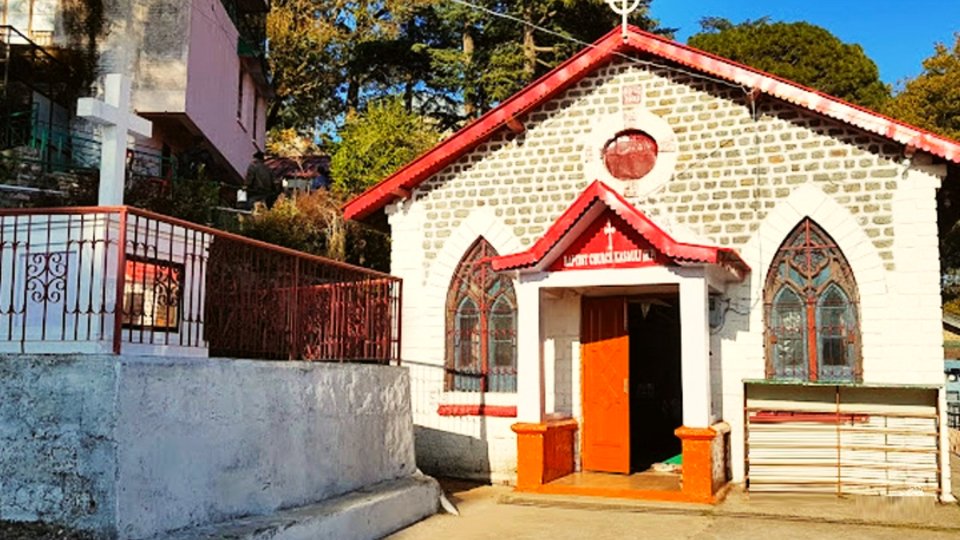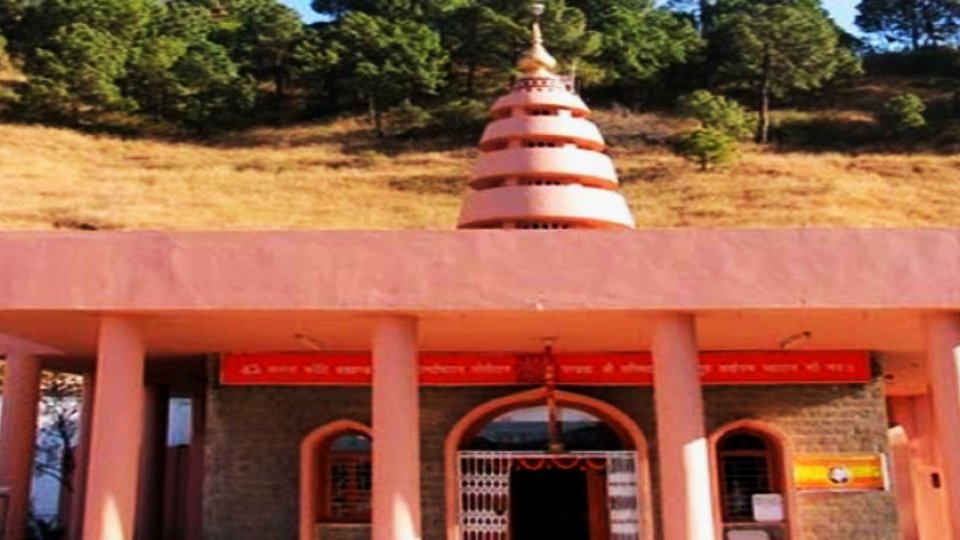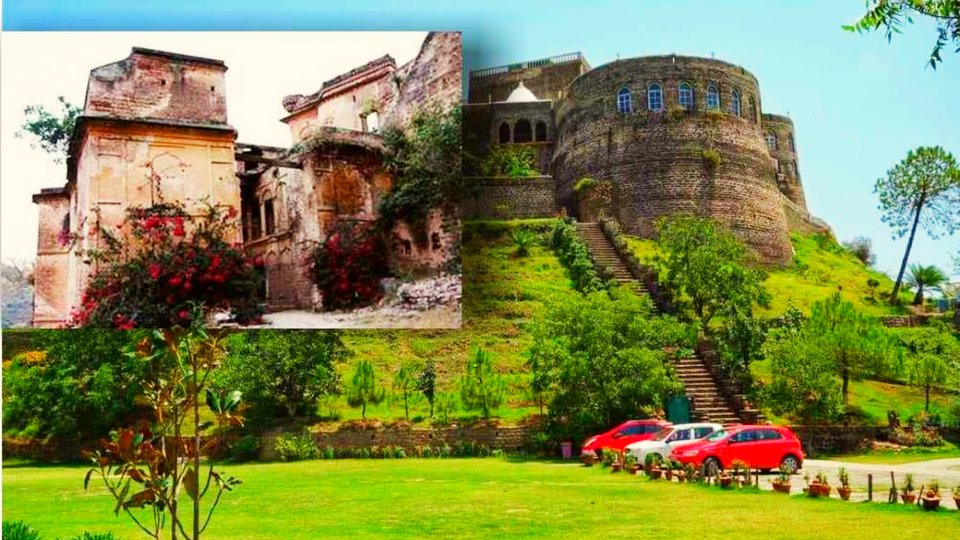Best Places To Visit In Uttarakhand | Things To Do | How To Reach
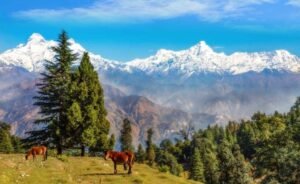
Uttarakhand
Uttarakhand, known as the “Land of Gods,” is a picturesque state in northern India, nestled in the Himalayas. Its spiritual significance, diverse ecosystems, and rich cultural heritage make it a popular destination for nature lovers and spiritual seekers. The state boasts towering mountain peaks, lush valleys, sacred rivers, and pristine lakes. Cities like Dehradun, Rishikesh, and Haridwar serve as gateways to this Himalayan haven, known for their spiritual significance and vibrant festivals.
Home to pilgrimage sites like Yamunotri, Gangotri, Kedarnath, and Badrinath, Uttarakhand attracts millions of devotees annually. Adventure enthusiasts flock to the region for trekking, skiing, river rafting, and wildlife safaris. The Jim Corbett National Park, India’s oldest national park, is a paradise for wildlife enthusiasts.
Quaint hill stations like Mussoorie and Nainital offer respite from the summer heat, contributing to Uttarakhand’s charm.
Top 50 Best Places To Visit In Uttarakhand:
Uttarakhand has two regions, Garhwal and Kumaon, each with its own culture, history, and attractions. Some of the best places to visit in Uttarakhand are:
Rishikesh:” Where the Ganges whispers serenity”
Haridwar: “A spiritual journey along the sacred Ganges”
Dehradun: ”Where modernity meets Himalayan tranquility”
Mussoorie: “Unveiling the charm of the Queen of Hills”
Nainital: ”A mirror to the stars in the heart of the Himalayas.”
Auli: ”Ski into the lap of the snow-laden Himalayas.”
Jim Corbett National Park: “A wilderness symphony in the heart of nature.”
Valley of Flowers: “Nature’s canvas painted in vibrant hues.”
Kedarnath: “Where devotion meets the towering Himalayan peaks.”
Badrinath: “A pilgrimage to divinity beneath the snow-capped spires.”
Gangotri: “Source of purity, the cradle of the Ganga.”
Yamunotri: “Origin of the sacred Yamuna River.”
Hemkund Sahib: “High-altitude sanctuary of spiritual reflection.”
Almora: ”Where panoramic views embrace timeless tranquility.”
Ranikhet: “Serene landscapes fit for royalty.”
Pithoragarh: “Gateway to the mighty Himalayas.”
Binsar: “A sanctuary of pristine nature and panoramic vistas.”
Bhimtal: “Where the calm lake mirrors mountain serenity.”
Mukteshwar: “A blissful retreat in the lap of the Kumaon hills.”
Chakrata: “Unveiling the rugged beauty of the Garhwal region.”
Lansdowne: “Where time stands still amidst pine-clad hills.”
Kanatal: “Amidst the blossoms, a symphony of serenity.”
Chopta: “Gateway to the mesmerizing Tungnath and Chandrashila.”
Tehri Dam: “Harnessing the power of nature in the Himalayas.”
Harsil: “A hidden jewel cradled by the Bhagirathi River.”
Gaumukh: “Witness the divine birthplace of the Ganges.”
Rudraprayag: “Confluence of rivers, harmonizing nature’s symphony.”
Pauri: “Where the panoramic views paint a poetic landscape.”
Kausani: “Revel in the panoramic grandeur of the Himalayas.”
Jageshwar: “Temples of antiquity in the lap of sacred forests.”
Munsiyari: “Gateway to the Milam and Ralam Glaciers.”
Khirsu: “A quiet haven with orchards and Himalayan views.”
Joshimath: “Gateway to Badrinath, a confluence of devotion.”
Chamba: “Where the Himalayas embrace ancient cultural vibes.”
Dhanaulti: “Unwind amidst the alpine forests and tranquility.”
Gaurikund: “Starting point of the sacred Kedarnath Yatra.”
Guptkashi: “A serene town on the way to Kedarnath.”
Kotdwara: “Gateway to the mystical Garhwal region.”
Bhavishya Badri: “A glimpse into the prophetic future of spirituality.”
Rudranath: “Among the Panch Kedar, where Lord Shiva resides.”
Madhyamaheshwar: “A divine sanctuary in the Garhwal Himalayas.”
Kartik Swami Temple: “Pilgrimage to the abode of Lord Kartikeya.”
Patal Bhuvaneshwar: “Exploring the hidden wonders beneath the Earth.”
Bhairav Temple, Kedarnath: “A sacred sanctuary on the spiritual journey.”
Tungnath: “Where spirituality meets the Himalayan heights.
Kempty Falls: “Nature’s cascade of refreshing serenity.”
Bhulla Lake: “Tranquil reflections in the heart of nature.”
Sari Village: “A rustic charm amidst Himalayan landscapes.”
Panch Kedar: “Journey to the five sacred abodes of Lord Shiva.”
Bhairon Ghati: “A spiritual passage in the lap of the Himalayas.”
Rishikesh:” Where the Ganga whispers serenity”
Rishikesh, often regarded as the “Yoga Capital of the World,” is a tranquil town situated on the banks of the sacred Ganga River in the northern state of Uttarakhand, India. The tagline “Where the Ganga whispers serenity” encapsulates the essence of this spiritual haven. Known for its ashrams, yoga retreats, and the resonating sound of temple bells, Rishikesh offers a serene escape from the hustle and bustle of everyday life. The flowing Ganga, surrounded by lush greenery and the backdrop of the Himalayan foothills, creates an atmosphere of calmness and spiritual reflection. Pilgrims, seekers, and nature enthusiasts alike find solace in the harmonious blend of spirituality and natural beauty that defines Rishikesh.
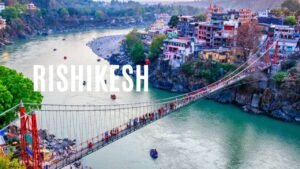
Why to Visit: Spiritual Retreats, Scenic Himalayan Landscapes, Adventure Activities, Pilgrimage Sites, Rich Cultural Heritage
Best Time to Visit: March to June (Summer), September to November (Autumn)
Ideal For: Nature Enthusiasts, Spiritual Seekers, Adventure Enthusiasts, Pilgrims, Culture Explorers
Ideal Duration: 7 to 10 Days
How to Reach:
- By Air: Jolly Grant Airport (Dehradun)
- By Train: Major Railway Stations – Dehradun, Haridwar, Kathgodam
- By Road: Well-connected by road networks
Things to Do: Trekking and Hiking, Pilgrimage Tours, River Rafting, Wildlife Safaris, Yoga and Meditation
Places to Stay: Parmarth Niketan, The Glasshouse on the Ganges, Aloha on the Ganges, Ganga Kinare – A Riverside Boutique Hotel, The Roseate Ganges, Hotel Ganesha Inn, Hotel Ishan, Bunk Stay Rishikesh, Zostel Rishikesh, Divine Ganga Cottage.
Haridwar: “A spiritual journey along the sacred Ganges”.
Haridwar, known as the gateway to the divine, is encapsulated in the phrase “A spiritual journey along the sacred Ganges.” Nestled along the banks of the holiest river in Hinduism, the city offers a profound pilgrimage experience. Haridwar is a place where the Ganges, in its purest form, guides seekers on a spiritual odyssey. The sacred ghats, especially Har Ki Pauri, become a stage for the mesmerizing Ganga Aarti, a spiritual spectacle that draws devotees from far and wide. Pilgrims immerse themselves in the ethereal aura, making Haridwar a timeless destination for those seeking a transformative and deeply spiritual connection with the sacred Ganges.

Why to Visit: Spiritual significance, Ganga Aarti, sacred ghats.
Best Time to Visit: October to March.
Ideal For: Pilgrims, spiritual seekers.
Ideal Duration: 2-3 days.
How to Reach: Well-connected by road and rail. Nearest airport is Jolly Grant Airport.
Things to Do: Attend Ganga Aarti at Har Ki Pauri, visit Mansa Devi Temple, Chandi Devi Temple, take a dip in the Ganges, explore local markets.
Places to Stay: Haveli Hari Ganga, Ganga Lahari, Hotel Ganges Rivera, Hotel Alpana, Hotel Krishna Ji, Hotel Vinayak.
Dehradun: ”Where modernity meets Himalayan tranquility”.
Dehradun, the capital city of Uttarakhand, is aptly described as “Where modernity meets Himalayan tranquility.” This city seamlessly combines urban amenities with the serene embrace of the nearby Himalayan foothills. Amidst the hustle and bustle, Dehradun offers a tranquil escape, surrounded by lush greenery and a backdrop of majestic mountains. The city serves as a gateway to the Himalayan wonders, providing a unique blend of contemporary living and the soothing tranquility of the Himalayan landscape.

Why to Visit: Education hub, scenic landscapes, gateway to Himalayan destinations.
Best Time to Visit: March to June, and September to November.
Ideal For: Students, nature enthusiasts, those seeking a Himalayan retreat.
Ideal Duration: 3-4 days.
How to Reach: Well-connected by road, nearest airport – Jolly Grant Airport, major railway station – Dehradun Railway Station.
Things to Do: Visit Forest Research Institute, explore Robber’s Cave, trek to Shikhar Fall, shop at Paltan Bazaar.
Places to Stay: Hotel Madhuban, Seyfert Sarovar Premiere, Four Points by Sheraton, Vishranti Resort, Lemon Tree Hotel.
Mussoorie: “Unveiling the charm of the Queen of Hills”.
Mussoorie, often referred to as the “Queen of Hills,” captivates visitors with its timeless charm. Nestled in the Garhwal Himalayas, this enchanting hill station unveils a captivating blend of colonial heritage and natural beauty. The phrase “Unveiling the charm of the Queen of Hills” captures the essence of Mussoorie, where mist-covered hills, lush landscapes, and colonial architecture create an inviting ambiance. A popular retreat from the plains, Mussoorie invites travelers to immerse themselves in its serene atmosphere, offering a delightful escape into the lap of the Himalayas.

Why to Visit:
- Scenic beauty, colonial charm, pleasant climate.
Best Time to Visit:
- March to June, and September to November.
Ideal For:
- Nature lovers, honeymooners, weekend getaways.
Ideal Duration:
How to Reach:
- Nearest airport – Jolly Grant Airport (Dehradun), nearest railway station – Dehradun Railway Station, well-connected by road.
Things to Do:
- Visit Kempty Falls, explore Camel’s Back Road, enjoy a cable car ride to Gun Hill, stroll on Mall Road, trek to Lal Tibba.
Places to Stay:
Jaypee Residency Manor, JW Marriott Mussoorie Walnut Grove & Spa, Fortune Resort Grace, Honeymoon Inn Mussoorie, Hotel Mall Palace.
Nainital: ”A mirror to the stars in the heart of the Himalayas.”
Nainital, often referred to as “A mirror to the stars in the heart of the Himalayas,” is a charming hill station nestled in the Kumaon region. This phrase encapsulates the magical allure of Nainital, where the serene Naini Lake reflects the beauty of the surrounding hills and the starlit skies. Surrounded by lush landscapes and embraced by the Himalayan foothills, Nainital offers a tranquil escape with its picturesque scenery, making it a beloved destination for nature enthusiasts and those seeking a respite from urban life.

Why to Visit:
- Scenic beauty, Naini Lake, pleasant climate.
Best Time to Visit:
- March to June, and September to November.
Ideal For:
- Nature lovers, honeymooners, family vacations.
Ideal Duration:
How to Reach:
- Nearest airport – Pantnagar Airport, nearest railway station – Kathgodam Railway Station, well-connected by road.
Things to Do:
- Boat ride on Naini Lake, visit Snow View Point, explore The Mall Road, trek to Tiffin Top, experience the Aerial Ropeway.
Places to Stay:
- The Naini Retreat, The Manu Maharani, Shervani Hilltop, The Pavilion, Hotel Himalaya.
Auli: ”Ski into the lap of the snow-laden Himalayas.”
Auli, known as a skiing paradise, invites visitors to “Ski into the lap of the snow-laden Himalayas.” Nestled in the Garhwal Himalayas, Auli offers pristine snow-covered slopes that cater to both beginners and experienced skiers. This phrase captures the essence of Auli’s charm, where the breathtaking Himalayan panorama serves as a backdrop to thrilling skiing adventures. With its well-groomed slopes and panoramic vistas, Auli stands as a haven for winter sports enthusiasts seeking an exhilarating experience in the lap of the majestic Himalayan ranges.
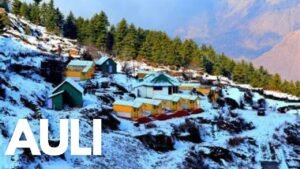
Why to Visit:
- Premier skiing destination, panoramic Himalayan views.
Best Time to Visit:
- Late November to March (for skiing and snow activities), April to June (for pleasant weather).
Ideal For:
- Adventure enthusiasts, skiing enthusiasts, nature lovers.
Ideal Duration:
How to Reach:
- Nearest airport – Jolly Grant Airport (Dehradun), nearest railway station – Haridwar, well-connected by road.
Things to Do:
- Skiing, snowboarding, cable car ride to Joshimath, trek to Gorson Bugyal, visit Auli Artificial Lake.
Places to Stay:
Clifftop Club Auli, The Royal Village Auli, Auli Resort, The Tattva Resort, GMVN Auli.
Jim Corbett National Park: “A wilderness symphony in the heart of nature.”
Jim Corbett National Park, often referred to as “A wilderness symphony in the heart of nature,” stands as a testament to the untamed beauty of the Indian wilderness. Nestled in the foothills of the Himalayas, this national park is a harmonious blend of diverse ecosystems, roaring rivers, and vibrant flora and fauna. The phrase encapsulates the essence of Jim Corbett as a sanctuary where the symphony of nature unfolds, providing a haven for wildlife enthusiasts and nature lovers alike. It’s a place where the call of the wild echoes through dense forests, making it a captivating destination for those seeking an immersive experience in the heart of untamed nature.

Why to Visit:
- Rich biodiversity, wildlife safaris, tiger conservation, bird watching.
Best Time to Visit:
- November to June (Open throughout the year).
Ideal For:
- Wildlife enthusiasts, nature photographers, adventure seekers.
Ideal Duration:
How to Reach:
- Nearest airport – Pantnagar Airport, nearest railway station – Ramnagar Railway Station, well-connected by road.
Things to Do:
- Jeep safaris, elephant safaris, bird watching, nature walks, wildlife photography.
Places to Stay:
Dhikala Forest Lodge, The Riverview Retreat, Aahana – The Corbett Wilderness, Jim’s Jungle Retreat, The Solluna Resort.
Valley of Flowers: “Nature’s canvas painted in vibrant hues.”
The Valley of Flowers is aptly described as “Nature’s canvas painted in vibrant hues.” Nestled in the Western Himalayas, this UNESCO World Heritage Site unfolds a breathtaking spectacle of diverse alpine flowers. The phrase captures the essence of the valley, where a riot of colors, ranging from vivid blues to vibrant reds, adorns the landscape during the monsoon season. This floral paradise is a testament to the sheer beauty and diversity of nature, offering a mesmerizing experience for those who venture into its enchanting realms.
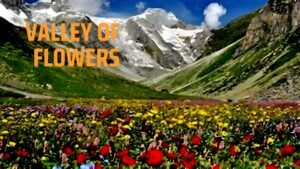
Why to Visit:
- Unique alpine floral diversity, UNESCO World Heritage Site, breathtaking landscapes.
Best Time to Visit:
- July to September (peak bloom during monsoon).
Ideal For:
- July to September (peak bloom during monsoon).
Ideal Duration:
How to Reach:
- Nearest airport – Jolly Grant Airport (Dehradun), nearest railway station – Rishikesh Railway Station, trek from Govindghat.
Things to Do:
- Trekking in the Valley of Flowers, photography of alpine flowers, explore Hemkund Sahib.
Places to Stay:
Limited accommodation options; can stay in nearby areas like Govindghat or Ghangaria during the trek.
Kedarnath: “Where devotion meets the towering Himalayan peaks.”
Kedarnath, encapsulated as “Where devotion meets the towering Himalayan peaks,” holds a sacred presence amidst the majestic mountains. Nestled in the Garhwal Himalayas, this revered pilgrimage site is a destination where devotees embark on a spiritual journey to seek the blessings of Lord Shiva. The phrase evokes the profound connection between faith and nature, as pilgrims are drawn to this divine abode nestled in the lap of the Himalayas, creating a unique and spiritual intersection of devotion and the awe-inspiring heights of the Himalayan peaks.
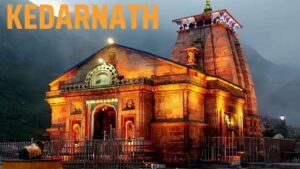
Why to Visit:
- Sacred pilgrimage site, home to Kedarnath Temple, one of the Char Dhams.
Best Time to Visit:
- May to June, and September to October.
Ideal For:
- Pilgrims, devotees of Lord Shiva.
Ideal Duration:
How to Reach:
- Nearest airport – Jolly Grant Airport (Dehradun), nearest railway station – Rishikesh Railway Station, trek from Gaurikund.
Things to Do:
- Visit Kedarnath Temple, seek blessings at Bhairavnath Temple, witness the Kedarnath Aarti.
Places to Stay:
Limited accommodation options, pilgrims often stay in dharamshalas and guesthouses.
Badrinath: “A pilgrimage to divinity beneath the snow-capped spires.”
Badrinath, aptly described as “A pilgrimage to divinity beneath the snow-capped spires,” stands as a sacred destination nestled in the heart of the Himalayas. Home to the revered Badrinath Temple dedicated to Lord Vishnu, this pilgrimage site offers a divine retreat amidst the majestic snow-clad peaks. The phrase encapsulates the spiritual journey undertaken by devotees who seek solace and blessings in the serene ambiance beneath the towering, snow-covered spires of Badrinath, creating a sacred and tranquil haven in the lap of the Himalayas.
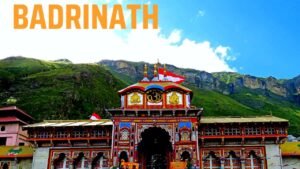
Why to Visit:
- Sacred pilgrimage site, home to Badrinath Temple dedicated to Lord Vishnu, part of the Char Dham Yatra.
Best Time to Visit:
- May to June, and September to October.
Ideal For:
- Pilgrims, devotees of Lord Vishnu.
Ideal Duration:
How to Reach:
- Nearest airport – Jolly Grant Airport (Dehradun), nearest railway station – Rishikesh Railway Station, well-connected by road.
Things to Do:
- Visit Badrinath Temple, take a dip in Tapt Kund, explore Mana Village, offer prayers at Charanpaduka.
Places to Stay:
Limited accommodation options, including guesthouses and dharamshalas in and around Badrinath.
Gangotri: “Source of purity, cradle of the Ganges.”
Gangotri, aptly described as the “Source of purity, cradle of the Ganges,” is a sacred pilgrimage site situated in the Garhwal Himalayas. This phrase encapsulates the spiritual significance of Gangotri, where the pristine Ganges River originates. As the birthplace of the holy river, Gangotri is revered as a symbol of purity and the starting point of the sacred journey of the Ganges. Pilgrims and devotees embark on a spiritual odyssey to this hallowed destination, seeking blessings and a connection with the divine essence that flows from the glaciers of Gangotri.
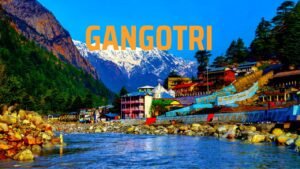
Why to Visit:
- Sacred pilgrimage site, origin of the Ganges River, part of the Char Dham Yatra.
Best Time to Visit:
- May to June, and September to October.
Ideal For:
- Pilgrims, devotees of the Ganges.
Ideal Duration:
How to Reach:
- Nearest airport – Jolly Grant Airport (Dehradun), nearest railway station – Rishikesh Railway Station, well-connected by road.
Things to Do:
- Visit Gangotri Temple, take a holy dip in the Ganges at Bhagirathi River, trek to Gaumukh.
Places to Stay:
Limited accommodation options; guesthouses and dharamshalas available in Gangotri.
Visit Yamunotri Temple, take a holy dip in the Yamuna, trek to Surya Kund.
Places to Stay:
Limited accommodation options; guesthouses and dharamshalas available in Yamunotri.
Yamunotri: “Origin of the sacred Yamuna River.”
Yamunotri, succinctly described as the “Origin of the sacred Yamuna River,” is a sacred pilgrimage site nestled in the Garhwal Himalayas. This phrase encapsulates the spiritual significance of Yamunotri, where the pristine Yamuna River begins its divine journey. Pilgrims and devotees embark on a reverent expedition to this hallowed destination, seeking the blessings and purity associated with the origin of the sacred Yamuna.
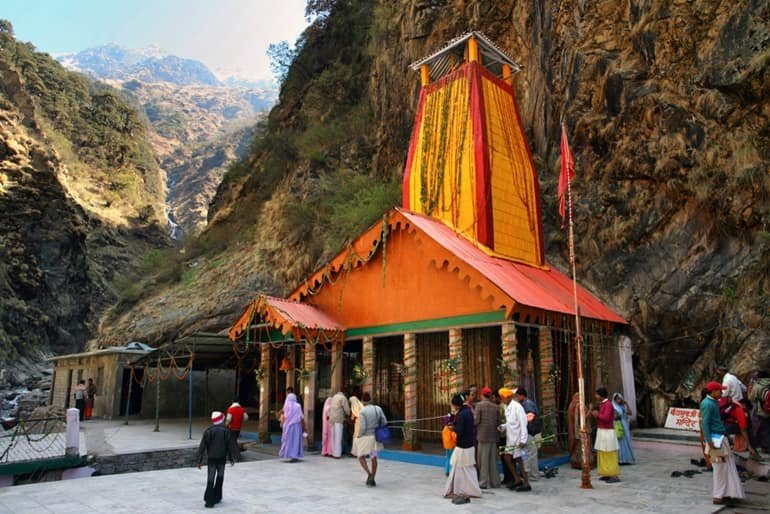
Why to Visit:
- Sacred pilgrimage site, origin of the Yamuna River, part of the Char Dham Yatra.
Best Time to Visit:
- May to June, and September to October.
Ideal For:
- Pilgrims, devotees of the Yamuna.
Ideal Duration:
How to Reach:
- Nearest airport – Jolly Grant Airport (Dehradun), nearest railway station – Rishikesh Railway Station, well-connected by road.
Things to Do:Visit Yamunotri Temple, take a holy dip in the Yamuna, trek to Surya Kund.
Places To Stay:
- Limited accommodation options; guesthouses and dharamshalas available in Yamunotri.
13. Hemkund Sahib: “High-altitude sanctuary of spiritual reflection.”
Hemkund Sahib, aptly described as the “High-altitude sanctuary of spiritual reflection,” stands as a revered Sikh pilgrimage site situated amidst the majestic Himalayan peaks. This phrase encapsulates the spiritual significance of Hemkund Sahib, where the serene lake and the Gurudwara offer a tranquil sanctuary for spiritual reflection at high altitudes. Pilgrims undertake a challenging journey to this sacred abode, seeking both physical and spiritual elevation in the pristine and serene surroundings of Hemkund Sahib.
Why to Visit:
- Sacred Sikh pilgrimage site, serene high-altitude lake, spiritual significance.
Best Time to Visit:
Ideal For:
- Sikh pilgrims, spiritual seekers, nature enthusiasts.
Ideal Duration:
How to Reach:
- Nearest airport – Jolly Grant Airport (Dehradun), nearest railway station – Rishikesh Railway Station, trek from Govindghat.
Things to Do:
- Visit Hemkund Sahib Gurudwara, take a dip in Hemkund Lake, trek to Valley of Flowers.
Places To Stay:
- Limited accommodation options; lodges and dharamshalas available in Ghangaria and Govindghat.
14. Almora: ”Where panoramic views embrace timeless tranquility.”
Almora, succinctly described as “Where panoramic views embrace timeless tranquility,” is a picturesque town nestled in the Kumaon region. This phrase captures the essence of Almora, where the expansive vistas of the Himalayas offer a serene backdrop, creating an atmosphere of timeless tranquility. The town, with its charming landscapes and panoramic views, stands as an inviting destination for those seeking a peaceful retreat amidst the natural beauty of the Himalayan foothills.
Why to Visit:
- Scenic landscapes, panoramic views of the Himalayas, cultural heritage.
Best Time to Visit:
- March to June, and September to November.
Ideal For:
- Nature lovers, peace seekers, cultural enthusiasts.
Ideal Duration:
How to Reach:
- Nearest airport – Pantnagar Airport, nearest railway station – Kathgodam Railway Station, well-connected by road.
Things to Do:
- Visit Kasar Devi Temple, explore Bright End Corner, stroll on Mall Road, witness cultural events at Almora.
Places To Stay:
- Kalmatia Sangam Himalaya Resort, The Himalayan Woods, Binsar Eco Resort, Khali Estate, Hotel Shikhar.
- Ranikhet: “Serene landscapes fit for royalty.”
Ranikhet, succinctly described as “Serene landscapes fit for royalty,” is a charming hill station in the Kumaon region. This phrase encapsulates the tranquil beauty of Ranikhet, where the serene landscapes unfold like a royal haven. The town, surrounded by lush greenery and Himalayan vistas, offers a peaceful retreat akin to a regal experience, making it an inviting destination for those seeking serenity amidst nature’s bounty.
Why to Visit:
- Scenic landscapes, peaceful ambiance, views of the Himalayas, historical significance
Best Time to Visit:
- March to June, and September to November.
Ideal For:
- Nature lovers, peace seekers, cultural enthusiasts.
Ideal Duration:
How to Reach:
- Nearest airport – Pantnagar Airport, nearest railway station – Kathgodam Railway Station, well-connected by road.
Things to Do:
- Visit Jhula Devi Temple, explore Chaubatia Gardens, golf at Upat Golf Course, enjoy the views at Haidakhan Babaji Temple.
Places To Stay:
WelcomHeritage Windsor Lodge, The Woodsvilla Residency, Chevron Rosemount, Ranikhet Inn, Holm Farm Heritage.
- Pithoragarh: “Gateway to the mighty Himalayas.”
Pithoragarh, succinctly described as the “Gateway to the mighty Himalayas,” serves as a prominent town in the Kumaon region. This phrase captures the essence of Pithoragarh, where the town stands as a gateway for those venturing into the awe-inspiring Himalayan ranges. Nestled amidst picturesque landscapes, Pithoragarh invites travelers to embark on a journey into the mighty Himalayas, offering a starting point for exploration and adventure in this majestic mountainous region.
Why to Visit:
- Gateway to the mighty Himalayas, scenic landscapes, historical significance.
Best Time to Visit:
- April to June, and September to November.
Ideal For:
- Nature lovers, adventure enthusiasts, history buffs.
Ideal Duration:
How to Reach:
- Nearest airport – Pantnagar Airport, nearest railway station – Tanakpur Railway Station, well-connected by road.
Things to Do:
- Visit Pithoragarh Fort, explore Askot Wildlife Sanctuary, enjoy views from Chandak Hill, trek to Kafni Glacier.
Places To Stay:
Hotel Alankar, Hotel Saurabh, The Journey Resorts, KMVN Tourist Rest House, Hotel Him Shikhar.
- Binsar: “A sanctuary of pristine nature and panoramic vistas.”
Binsar, aptly described as “A sanctuary of pristine nature and panoramic vistas,” is a captivating hill station in the Kumaon region. This phrase encapsulates the essence of Binsar, where lush landscapes and breathtaking panoramic views unfold, creating a sanctuary for those seeking a tranquil escape into the heart of pristine nature. The town, surrounded by dense forests and Himalayan peaks, invites travelers to immerse themselves in the serenity of its natural beauty and panoramic vistas.
Why to Visit:
- A sanctuary of pristine nature, panoramic vistas, biodiversity, wildlife.
Best Time to Visit:
- March to June, and September to November.
Ideal For:
- Nature lovers, bird watchers, peace seekers.
Ideal Duration:
How to Reach:
- Nearest airport – Pantnagar Airport, nearest railway station – Kathgodam Railway Station, well-connected by road.
Things to Do:
- Visit Binsar Wildlife Sanctuary, explore Zero Point, trek to Bineshwar Temple, enjoy nature walks.
Places To Stay:
Grand Oak Manor, Binsar Forest Retreat, Club Mahindra Binsar Valley, The Kumaon, Mary Budden Estate.
- Bhimtal: “Where the calm lake mirrors mountain serenity.”
Bhimtal, succinctly described as “Where the calm lake mirrors mountain serenity,” is a serene town in the Nainital district. This phrase captures the essence of Bhimtal, where the tranquil lake reflects the surrounding mountainous landscapes, creating an atmosphere of serene beauty. The town, with its picturesque setting and peaceful ambiance, invites visitors to unwind and experience the serenity mirrored in the calm waters of Bhimtal Lake.
Why to Visit:
- Tranquil lake, scenic beauty, peaceful ambiance.
Best Time to Visit:
- March to June, and September to November.
Ideal For:
- Nature lovers, peace seekers, boating enthusiasts.
Ideal Duration:
How to Reach:
- Nearest airport – Pantnagar Airport, nearest railway station – Kathgodam Railway Station, well-connected by road.
Things to Do:
- Boating in Bhimtal Lake, visit Bhimeshwar Mahadev Temple, explore Butterfly Research Center, trek to Hidimba Parvat.
Places To Stay:
The Rosewood, The Fern Hillside Resort, The Royal Court Bhimtal, Neelesh Inn, Mountain Club Resort.
- Mukteshwar: “A blissful retreat in the lap of the Kumaon hills.”
Mukteshwar, aptly described as “A blissful retreat in the lap of the Kumaon hills,” invites visitors to experience tranquility amidst the scenic beauty of the Himalayan foothills. The phrase captures the essence of Mukteshwar, where the town serves as a serene escape, providing a blissful retreat surrounded by lush landscapes and panoramic views. Mukteshwar’s peaceful ambiance and natural charm make it an ideal destination for those seeking solace and rejuvenation in the lap of the Kumaon hills.
Why to Visit:
- Scenic beauty, tranquility, panoramic views of the Himalayas, Mukteshwar Temple.
Best Time to Visit:
- March to June, and September to November.
Ideal For:
- Nature lovers, peace seekers, adventure enthusiasts.
Ideal Duration:
How to Reach:
- Nearest airport – Pantnagar Airport, nearest railway station – Kathgodam Railway Station, well-connected by road.
Things to Do:
- Visit Mukteshwar Temple, explore Chauli Ki Jali, enjoy trekking to Bhalu Gaad Waterfalls, experience camping.
Places To Stay:
The Himalayan Woods, Krish Rauni Resort, Trinetra Orchards, Renok Adventures Camps, The Golden Peak Hotel.
- Chakrata: “Unveiling the rugged beauty of the Garhwal region.”
Chakrata, succinctly described as “Unveiling the rugged beauty of the Garhwal region,” introduces visitors to the raw and untamed charm of this picturesque hill station. The phrase captures the essence of Chakrata, where the landscape showcases the rugged beauty of the Garhwal region. Surrounded by dense forests, panoramic views, and undulating terrain, Chakrata invites travelers to explore its unspoiled natural beauty and experience the raw allure of the Garhwal hills.
Why to Visit:
- Rugged beauty, panoramic views, pristine nature, untouched charm of Garhwal region.
Best Time to Visit:
- March to June, and September to November.
Ideal For:
- Nature lovers, adventure enthusiasts, peace seekers.
Ideal Duration:
How to Reach:
- Nearest airport – Jolly Grant Airport (Dehradun), nearest railway station – Dehradun Railway Station, well-connected by road.
Things to Do:
- Explore Tiger Falls, visit Chilmiri Neck for panoramic views, trek to Budher Caves, enjoy nature walks in Kanasar.
Places To Stay:
Snow Adventure Zone, Hotel Himalayan Paradise, Hotel Hill Knights, Hotel Burans Residency, Chakrata Retreat.
- Lansdowne: “Where time stands still amidst pine-clad hills.”
Lansdowne, succinctly described as “Where time stands still amidst pine-clad hills,” invites visitors to experience a tranquil escape in the lap of nature. The phrase captures the essence of Lansdowne, where the town’s serene ambiance, surrounded by pine-clad hills, creates an atmosphere where time seems to slow down. Lansdowne, with its picturesque landscapes and pleasant weather, offers a peaceful retreat for those seeking solitude and a connection with the natural beauty of the Himalayan foothills.
Why to Visit:
- Serene ambiance, pine-clad hills, peaceful retreat, historical attractions.
Best Time to Visit:
- Throughout the year, but March to June and September to November are ideal..
Ideal For:
- Throughout the year, but March to June and September to November are ideal.
Ideal Duration:
How to Reach:
- Nearest airport – Jolly Grant Airport (Dehradun), nearest railway station – Kotdwar Railway Station, well-connected by road.
Things to Do:
- Visit Tip-in-Top viewpoint, explore Bhulla Lake, stroll at Gandhi Chowk, visit St. Mary’s Church.
Places To Stay:
Lans Castle, Fairydale Resort, Hotel Snow Cliff, Lansdowne Woods, Blue Pine Resort.
- Kanatal: “Amidst the blossoms, a symphony of serenity.”
Kanatal, succinctly described as “Amidst the blossoms, a symphony of serenity,” paints a picture of this charming hill station nestled in the Garhwal region. The phrase captures the essence of Kanatal, where the town’s serene ambiance is complemented by blooming blossoms, creating a harmonious symphony of tranquility. Surrounded byThroughout the year, but March to June and September to November are ideal. lush greenery and panoramic views of the Himalayas, Kanatal invites visitors to experience the beauty of nature and find solace in its peaceful surroundings.
Why to Visit:
- Scenic beauty, serenity, panoramic views, blossoming landscapes.
Best Time to Visit:
- Throughout the year, but March to June and September to November are ideal..
Ideal For:
- Nature lovers, peace seekers, adventure enthusiasts.
Ideal Duration:
How to Reach:
- NNearest airport – Jolly Grant Airport (Dehradun), nearest railway station – Rishikesh Railway Station, well-connected by road.
Things to Do:
- Boating, water sports, enjoy the scenic views, visit nearby attractions like New Tehri.
Places To Stay:
- Limited accommodation options near Tehri Dam; prefer staying in nearby towns like Tehri, Chamba, or Rishikesh.
- Chopta: “Gateway to the mesmerizing Tungnath and Chandrashila.”
Chopta, succinctly described as the “Gateway to the mesmerizing Tungnath and Chandrashila,” introduces visitors to this enchanting region nestled in the Garhwal Himalayas. The phrase captures the essence of Chopta, where the town serves as a gateway to the awe-inspiring Tungnath Temple and Chandrashila Peak. Surrounded by captivating landscapes and pristine nature, Chopta invites travelers to embark on a spiritual and adventurous journey in the heart of the Himalayas.
Why to Visit:
- Gateway to Tungnath and Chandrashila, breathtaking landscapes, spiritual significance.
Best Time to Visit:
- April to June, and September to November.
Ideal For:
- Nature lovers, trekkers, spiritual seekers.
Ideal Duration:
How to Reach:
- Nearest airport – Jolly Grant Airport (Dehradun), nearest railway station – Kotdwar Railway Station, well-connected by road.
Things to Do:
- Trek to Tungnath and Chandrashila, enjoy panoramic views, bird watching, camping.
Places To Stay:
Magpie Camps, Tungnath Nature Camp, Snow Leopard Adventures Camp, Shivalik Camps, Hotel Snow View.
- Tehri Dam: “Harnessing the power of nature in the Himalayas.”
Tehri Dam, succinctly described as “Harnessing the power of nature in the Himalayas,” symbolizes the engineering marvel nestled in the Garhwal Himalayas. This phrase encapsulates the essence of Tehri Dam, where the colossal structure stands as a testament to mankind’s ability to harness the immense power of nature for sustainable development. Set amidst picturesque surroundings, Tehri Dam not only represents technological prowess but also invites visitors to admire the harmonious coexistence of human innovation and the pristine beauty of the Himalayan landscape.
Why to Visit:
- Engineering marvel, harnessing hydropower, scenic surroundings, water sports.
Best Time to Visit:
- March to June, and September to November.
Ideal For:
- Nature enthusiasts, adventure seekers, those interested in hydropower projects.
Ideal Duration:
How to Reach:
- Nearest airport – Jolly Grant Airport (Dehradun), nearest railway station – Rishikesh Railway Station, well-connected by road.
Things to Do:
- Boating, water sports, enjoy the scenic views, visit nearby attractions like New Tehri.
Places To Stay:
- Lans Castle, Fairydale Resort, Hotel Snow Cliff, Lansdowne Woods, Blue Pine Resort.
- Harsil: “A hidden jewel cradled by the Bhagirathi River.”
Harsil, succinctly described as “A hidden jewel cradled by the Bhagirathi River,” introduces visitors to this picturesque hamlet nestled in the Garhwal Himalayas. The phrase captures the essence of Harsil, where the town remains a concealed gem, embraced by the serene flow of the Bhagirathi River. Surrounded by lush greenery and framed by snow-capped peaks, Harsil invites travelers to discover its tranquil beauty, making it an ideal destination for those seeking solace amidst nature’s bounty.
Why to Visit:
- Scenic beauty, serene ambiance, proximity to the Bhagirathi River, natural tranquility.
Best Time to Visit:
- May to June, and September to November.
Ideal For:
- Nature lovers, peace seekers, offbeat destination enthusiasts.
Ideal Duration:
How to Reach:
- Nearest airport – Jolly Grant Airport (Dehradun), nearest railway station – Rishikesh Railway Station, well-connected by road; local taxis and buses available.
Things to Do:
- Explore Mukhwa Village, visit Sattal, enjoy the riverside views, trek to Dharali.
Places To Stay:
- Limited accommodation options; guesthouses and small hotels available in Harsil.
- Gaumukh: “Witness the divine birthplace of the Ganges.”
Gaumukh, succinctly described as “Witness the divine birthplace of the Ganges,” beckons visitors to this sacred glacial terminus in the Garhwal Himalayas. The phrase encapsulates the essence of Gaumukh, where the turbulent waters of the Bhagirathi River emerge from the glacier, symbolizing the spiritual origin of the revered Ganges. Surrounded by towering peaks and pristine landscapes, Gaumukh invites pilgrims and nature enthusiasts alike to witness the awe-inspiring spectacle of nature’s divinity and the symbolic birthplace of one of India’s holiest rivers.
Why to Visit:
- May to June, and September to October.
Best Time to Visit:
- Throughout the year, but March to June and September to November are ideal..
Ideal For:
- Pilgrims, trekkers, nature enthusiasts.
Ideal Duration:
- 5-7 days (including trekking time).
How to Reach:
- Nearest airport – Jolly Grant Airport (Dehradun), nearest railway station – Rishikesh Railway Station. From Gangotri, a trek of approximately 18 km leads to Gaumukh.
Things to Do:
- Witness the source of the Ganges, trek to Tapovan, experience the spiritual ambiance, photography.
Places To Stay:
- Limited accommodation; trekkers often camp or stay in basic lodges during the trek. Gangotri offers more stay options.
- Rudraprayag: “Confluence of rivers, harmonizing nature’s symphony.”
Rudraprayag, succinctly described as the “Confluence of rivers, harmonizing nature’s symphony,” invites visitors to this sacred town nestled in the Garhwal region. The phrase captures the essence of Rudraprayag, where the confluence of the Alaknanda and Mandakini Rivers symbolizes a harmonious blend of nature’s forces. Surrounded by majestic mountains and offering spiritual significance, Rudraprayag invites pilgrims and nature lovers to experience the tranquil melody created by the merging rivers, echoing the symphony of the natural world.
Why to Visit:
- Sacred confluence of Alaknanda and Mandakini Rivers, spiritual significance, scenic beauty.
Best Time to Visit:
- March to June, and September to November.
Ideal For:
- Pilgrims, nature enthusiasts, those seeking spiritual experiences.
Ideal Duration:
How to Reach:
- Nearest airport – Jolly Grant Airport (Dehradun), nearest railway station – Rishikesh Railway Station, well-connected by road.
Things to Do:
- Visit Rudranath and Chamunda Devi Temples, explore Koteshwar Temple, enjoy the riverside views, experience the spiritual ambiance.
Places To Stay:
- Hotels and guesthouses are available in Rudraprayag, offering a range of accommodation options for different budgets.
- Pauri: “Where the panoramic views paint a poetic landscape.”
Pauri, succinctly described as “Where the panoramic views paint a poetic landscape,” introduces visitors to this charming town perched in the Garhwal region. The phrase captures the essence of Pauri, where the town’s elevated vantage points offer breathtaking panoramic views of the surrounding landscapes, creating a picturesque setting reminiscent of poetry. Surrounded by hills and adorned with natural beauty, Pauri invites travelers to witness the harmonious blend of nature’s colors and contours, shaping a scenic masterpiece that evokes a poetic sense of awe and admiration.
Why to Visit:
- Panoramic views, natural beauty, serene ambiance, viewpoints.
Best Time to Visit:
- Throughout the year, but March to June and September to November are ideal.
Ideal For:
- Nature lovers, peace seekers, photography enthusiasts.
Ideal Duration:
How to Reach:
- Nearest airport – Jolly Grant Airport (Dehradun), nearest railway station – Kotdwar Railway Station, well-connected by road.
Things to Do:
- Visit Kandoliya Temple, explore Kyunkaleshwar Mahadev Temple, enjoy the viewpoints, stroll at the Pauri market.
Places To Stay:
- Hotels and guesthouses in Pauri offer various accommodation options for different budgets. Some popular choices include Hotel Sun-n-Snow, Hotel Trishul, and Hotel Dev Heights.
- Kausani: “Revel in the panoramic grandeur of the Himalayas.”
Kausani, succinctly described as “Revel in the panoramic grandeur of the Himalayas,” invites visitors to this idyllic hill station nestled in the Kumaon region. The phrase encapsulates the essence of Kausani, where the town’s elevated vantage points offer breathtaking panoramic views of the majestic Himalayan peaks. Surrounded by serene landscapes and lush greenery, Kausani provides a perfect setting for travelers to immerse themselves in the awe-inspiring beauty of the Himalayan range, making it an ideal destination for those seeking tranquility amidst nature’s grandeur.
Why to Visit:
- Panoramic views of the Himalayas, serene ambiance, lush greenery, scenic beauty.
Best Time to Visit:
- Throughout the year, but March to June and September to November are ideal.
Ideal For:
- Nature lovers, peace seekers, photography enthusiasts.
Ideal Duration:
How to Reach:
- Nearest airport – Pantnagar Airport, nearest railway station – Kathgodam Railway Station, well-connected by road.
Things to Do:
- Visit Anashakti Ashram, enjoy the viewpoints like Pant Museum and Kausani Tea Estate, trek to Rudradhari Falls and Caves.
Places To Stay:
- Several hotels and resorts in Kausani offer accommodation options for different budgets. Some popular choices include Chevron Mountain Villa, Blossom Resort, and The Buransh.
- Jageshwar: “Temples of antiquity in the lap of sacred forests.”
Jageshwar, succinctly described as “Temples of antiquity in the lap of sacred forests,” invites visitors to this ancient temple complex nestled in the Kumaon region. The phrase encapsulates the essence of Jageshwar, where a cluster of historic temples stands amidst serene and sacred forests. Surrounded by a spiritual ambiance and ancient architectural marvels, Jageshwar beckons pilgrims and history enthusiasts alike to explore the timeless beauty and cultural significance of this revered site in the heart of the Himalayas.
Why to Visit:
- Ancient temple complex, spiritual significance, historic architecture, serene surroundings.y.
Best Time to Visit:
- March to June, and September to November.
Ideal For:
- Pilgrims, history enthusiasts, nature lovers.
Ideal Duration:
How to Reach:
- Nearest airport – Pantnagar Airport, nearest railway station – Kathgodam Railway Station, well-connected by road.
Things to Do:
- Visit the Jageshwar Temples, explore the sacred forests, attend the Maha Shivaratri festival if visiting during February-March.
Places To Stay:
- Limited accommodation options in Jageshwar; nearby towns like Almora provide more choices. Some options include Hotel Mount Glory and Hotel Shivalik River Retreat in Almora.
- Munsiyari: “Gateway to the Milam and Ralam Glaciers.”
Munsiyari, succinctly described as the “Gateway to the Milam and Ralam Glaciers,” introduces visitors to this scenic town nestled in the Kumaon region. The phrase encapsulates the essence of Munsiyari, where the town serves as a gateway to the pristine beauty of the Milam and Ralam Glaciers. Surrounded by breathtaking landscapes and offering panoramic views of the Himalayas, Munsiyari beckons nature enthusiasts and trekkers to explore the enchanting glaciers and experience the raw grandeur of the high-altitude landscapes in the heart of the Himalayan foothills.
Why to Visit:
- Gateway to Milam and Ralam Glaciers, stunning Himalayan views, trekking hub.
Best Time to Visit:
- March to June, and September to November for pleasant weather; December to February for snow enthusiasts.
Ideal For:
- Trekkers, nature enthusiasts, adventure seekers.
Ideal Duration:
How to Reach:
- Nearest airport – Pantnagar Airport, nearest railway station – Kathgodam Railway Station, well-connected by road. Buses and shared taxis are available.
Things to Do:
- Trek to Milam and Ralam Glaciers, explore Birthi Falls, visit Darkot village, witness panoramic views from Khalia Top.
Places To Stay:
- Accommodation options in Munsiyari include guesthouses, hotels, and resorts. Some popular choices are Hotel Bilju Inn, Ojaswi Resort, and Wayfarer Mountain Resort.
- Khirsu: “A quiet haven with orchards and Himalayan views.”
Khirsu, succinctly described as “A quiet haven with orchards and Himalayan views,” invites visitors to this serene retreat nestled in the Garhwal region. The phrase encapsulates the essence of Khirsu, where the town’s tranquil ambiance is complemented by lush orchards and enchanting views of the Himalayan peaks. Surrounded by natural beauty and offering a peaceful escape from the bustling world, Khirsu beckons travelers to unwind amidst the harmonious blend of orchard-filled landscapes and the majestic backdrop of the Himalayas.
Why to Visit:
- Tranquil haven with orchards, Himalayan views, serene ambiance.
Best Time to Visit:
- Throughout the year, but March to June and September to November are ideal.
Ideal For:
- Nature lovers, peace seekers, those looking for a quiet retreat.
Ideal Duration:
How to Reach:
- Nearest airport – Jolly Grant Airport (Dehradun), nearest railway station – Kotdwar Railway Station, well-connected by road.
Things to Do:
- Visit Ghandiyal Devta Temple, enjoy the orchards, take nature walks, witness sunrise and sunset views.
Places To Stay:
- Limited accommodation options in Khirsu include guesthouses and small hotels. Some options are Himalayan Peace Heaven Resort and GMVN Tourist Bungalow Khirsu.
- Joshimath: “Gateway to Badrinath, a confluence of devotion.”
Joshimath, succinctly described as the “Gateway to Badrinath, a confluence of devotion,” introduces visitors to this sacred town nestled in the Chamoli district. The phrase encapsulates the essence of Joshimath, where the town serves as a pivotal point for pilgrims embarking on the journey to the revered Badrinath Temple. Surrounded by the spiritual aura of the Himalayas, Joshimath beckons devotees and travelers alike to experience the confluence of religious fervor and natural beauty at this significant junction on the pilgrimage route to one of India’s holiest shrines.
Why to Visit:
- Gateway to Badrinath, significant pilgrimage site, spiritual ambiance.
Best Time to Visit:
- May to June, and September to November; avoid the winter months due to heavy snowfall.
Ideal For:
- Pilgrims, devotees, nature enthusiasts..
Ideal Duration:
How to Reach:
- Nearest airport – Jolly Grant Airport (Dehradun), nearest railway station – Rishikesh Railway Station, well-connected by road. Shared taxis and buses are available.
Things to Do:
- Visit Badrinath Temple, explore the Narsingh Temple, enjoy the views of surrounding peaks, undertake trekking to nearby attractions.
Places To Stay:
- Joshimath offers a range of accommodation options, including hotels and guesthouses. Some popular choices are The Tattva, Hotel Dronagiri, and The Chardham Camp Joshimath.
34.Chamba: “Where the Himalayas embrace ancient cultural vibes.
Chamba, succinctly described as “Where the Himalayas embrace ancient cultural vibes,” invites visitors to this town nestled in the Garhwal region. The phrase encapsulates the essence of Chamba, where the majestic Himalayan landscapes harmoniously coexist with the rich cultural heritage of the town. Surrounded by scenic beauty and dotted with historical landmarks, Chamba beckons travelers to experience the blend of natural splendor and ancient cultural traditions that define this tranquil Himalayan destination.
Why to Visit:
- Scenic beauty, ancient cultural vibes, Himalayan landscapes.
Best Time to Visit:
- April to June, and September to November for pleasant weather.
Ideal For:
- Nature lovers, history enthusiasts, those seeking cultural experiences.
Ideal Duration:
How to Reach:
- Nearest airport – Jolly Grant Airport (Dehradun), nearest railway station – Kotdwar Railway Station, well-connected by road.
Things to Do:
- Explore ancient temples like Chamba Golu Devta Temple, enjoy views of the Bhuri Singh Museum, stroll in the local markets.
Places To Stay:
- Chamba offers various accommodation options, including hotels and guesthouses. Some popular choices are Hotel Classic Hill View, Hotel Amit Palace, and The Terraces.
- Khirsu: “A quiet haven with orchards and Himalayan views.”
Khirsu, succinctly described as “A quiet haven with orchards and Himalayan views,” invites visitors to this serene retreat nestled in the Garhwal region. The phrase encapsulates the essence of Khirsu, where the town’s tranquil ambiance is complemented by lush orchards and enchanting views of the Himalayan peaks. Surrounded by natural beauty and offering a peaceful escape from the bustling world, Khirsu beckons travelers to unwind amidst the harmonious blend of orchard-filled landscapes and the majestic backdrop of the Himalayas.
Why to Visit:
- Tranquil haven with orchards, Himalayan views, serene ambiance.
Best Time to Visit:
- Throughout the year, but March to June and September to November are ideal.
Ideal For:
- Nature lovers, peace seekers, those looking for a quiet retreat.
Ideal Duration:
How to Reach:
- Nearest airport – Jolly Grant Airport (Dehradun), nearest railway station – Kotdwar Railway Station, well-connected by road.
Things to Do:
- Visit Ghandiyal Devta Temple, enjoy the orchards, take nature walks, witness sunrise and sunset views.
Places To Stay:
- Limited accommodation options in Khirsu include guesthouses and small hotels. Some options are Himalayan Peace Heaven Resort and GMVN Tourist Bungalow Khirsu.
